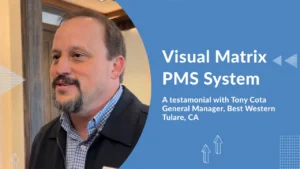Collaboration: An Effective Method for Cost Containment
If 2018 is anything like the previous year, and all signs suggest that it will be, then an onslaught of challenges lay ahead for organizations operating within the healthcare space. The persistent problem of uncertainty continues to linger with no one really knowing what new government legislation might be coming. Providers are bracing for even further softening of patient admissions as a result of upward trending deductibles and medical expenses, while wages stubbornly refuse to keep pace.[1] Growing bad debt, shrinking operating cash flow and a meek outlook on revenue growth have providers confronted with how they can reduce spend, create efficiencies and shore up the bottom line.
While there are numerous recommendations on how hospitals can cut costs, there is no single magic bullet. In fact, to be successful, hospitals must look across multiple business lines for cost reduction best practices. To that end, TPC works with Members to continually evaluate opportunities, not only in traditional categories, but also in a variety of strategic areas within Supply Chain, Purchased Services and Revenue Cycle. TPC serves as the platform for independent, community-based hospitals to collaborate their cost reduction efforts to effectively achieve more together than they could on their own.
In Supply Chain, TPC Members have documented a 20 percent reduction in supply costs as hospitals routinely evaluate the value propositions offered by suppliers. In doing so, Members have found that standardization is critical to reducing costs. And while standardization can be fairly straightforward in the commoditized categories, TPC has also realized significant success in more difficult categories including physician preference items. By working collaboratively, TPC Members engage their physicians from the start in product evaluations and cost cutting efforts. TPC provides physicians with clinical and financial data of utilization patterns, patient outcomes, product costs and value. This transparent data empowers clinicians to make smarter standardized purchasing decisions across the membership that positively impact both patients and hospitals.
TPC Members have a considerable advantage when it comes to the Purchased Services line of business. With over 20 years of Purchased Services contracting experience, TPC has proven industry-leading results in this omnibus category that include energy, foodservice, environmental services, maintenance, lab services, freight and logistics, and insurance. TPC works with Members to identify specific opportunities in which aggregation may provide benefit by standardizing pricing, terms and conditions, and ultimately reducing costs through savings or performance improvement. Member-led value analysis teams go beyond contracting opportunities to include the sharing and adopting of best practices within Purchased Services categories. The result has been an average of 14% savings in key service categories, translating to $35 million over the past several years.
Revenue Cycle is the newest area of focus for cost containment via the TPC aggregation model. Members have realized the benefit of working together to not only benchmark against each other and the industry, but to also identify and implement key processes and procedures. By developing efficiencies in vendor evaluations and engagements, TPC Member organizations are able to quickly and thoroughly review third-party vendors, and use their leverage to maximize solutions, pricing, and partnerships. Since 2016, TPC Revenue Cycle Programs have realized $6.6 million in savings and performance improvements in such areas as zero balance review, early out programs, clinical medical necessity and vendor management.
2018 is set to be a year where hospitals seek deeper cost savings. To Members’ benefit, TPC doesn’t just consider one method to contain costs, but rather identifies opportunities within Supply Chain, Purchased Services, and Revenue Cycle to offer Members greater success in their cost reduction efforts. During uncertain times and an ever-changing landscape, TPC Members find strength in numbers, working together to meet challenges and provide individuals in their communities with excellent care.
Stronger Together. Superior Results. To learn more about TPC visit www.tpc1.com/who-we-are/ today!
Read more at tpc1.com
[1] https://www.healthcaredive.com/news/hospital-budgets-2018/512137/









